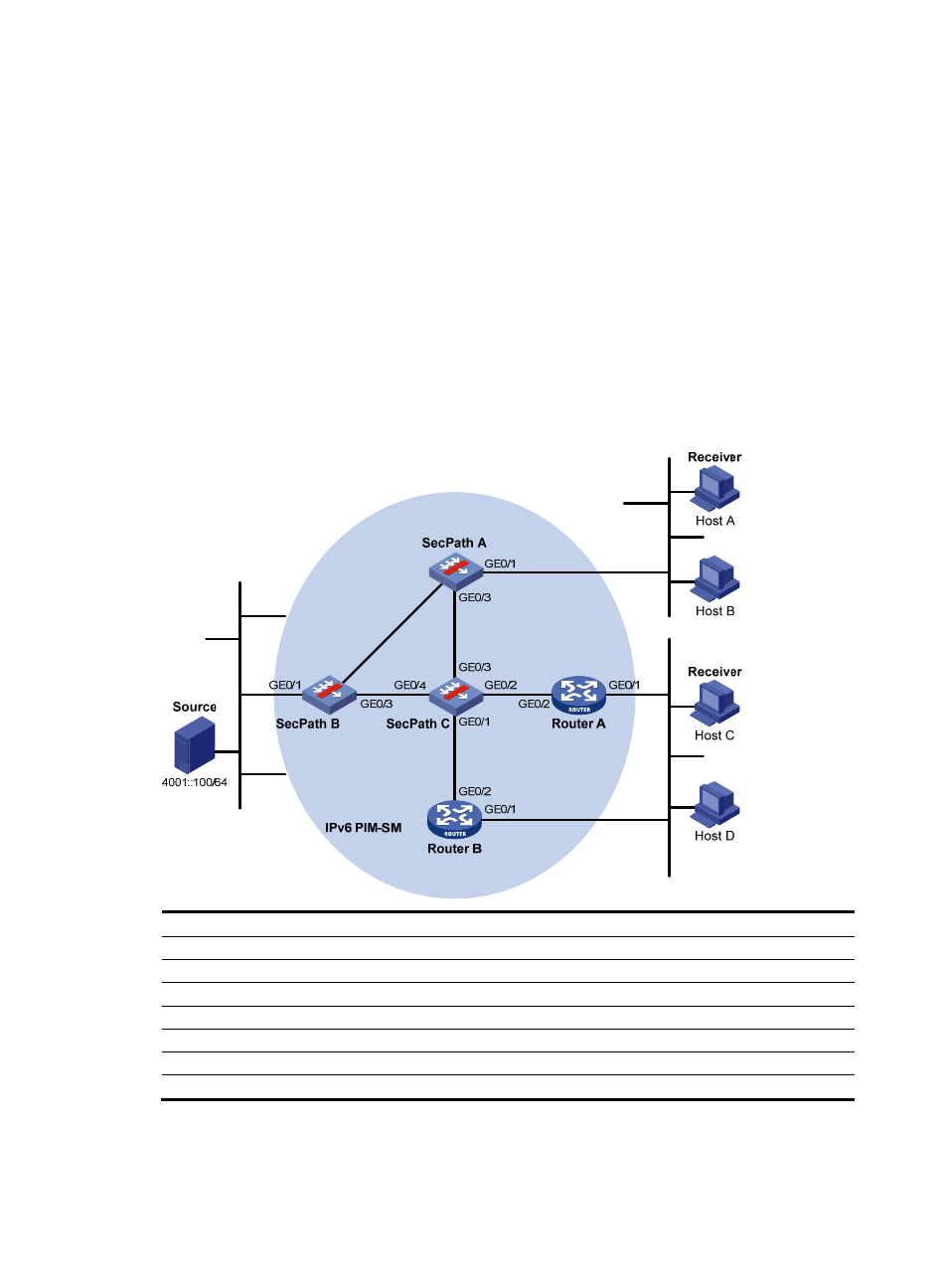Ipv6 pim-sm non-scoped zone configuration example, Network requirements, Configuration procedure – H3C Technologies H3C SecPath F1000-E User Manual
Page 899

874
IPv6 PIM-SM non-scoped zone configuration example
Network requirements
Receivers receive VOD information through multicast. The receiver groups of different organizations form
stub networks, and one or more receiver hosts exist in each stub network. The entire IPv6 PIM domain
operates in the sparse mode.
Host A and Host C are IPv6 multicast receivers in two stub networks, N1 and N2.
Both GigabitEthernet 0/3 on SecPath B and GigabitEthernet 0/3 on SecPath C act as C-BSRs and C-RPs;
the C-BSR on SecPath C has a higher priority; the range of IPv6 multicast groups served by the C-RP is
FF0E::101/64; modify the hash mask length to map a certain number of consecutive IPv6 multicast group
addresses within the range to the two C-RPs.
MLDv1 runs between SecPath A and N1 and between Router A/Router B and N2.
Figure 399 Network diagram
Device Interface
IPv6
address
Device
Interface IPv6
address
SecPath A
GE0/1
1001::1/64
SecPath B
GE0/1
4001::1/64
GE0/2
1002::1/64
GE0/2 1002::2/64
GE0/3
1003::1/64
GE0/3 4002::1/64
Router A
GE0/1
2001::1/64
SecPath C
GE0/1
3001::2/64
GE0/2
2002::1/64
GE0/2 2002::2/64
Router B
GE0/1
2001::2/64
GE0/3 1003::2/64
GE0/2
3001::1/64
GE0/4
4002::2/64
Configuration procedure
1.
Enable IPv6 forwarding and configure IPv6 addresses and IPv6 unicast routing:
Ether
net
Ethern
et
Ether
net
N1
N2
GE0/2
GE0/2